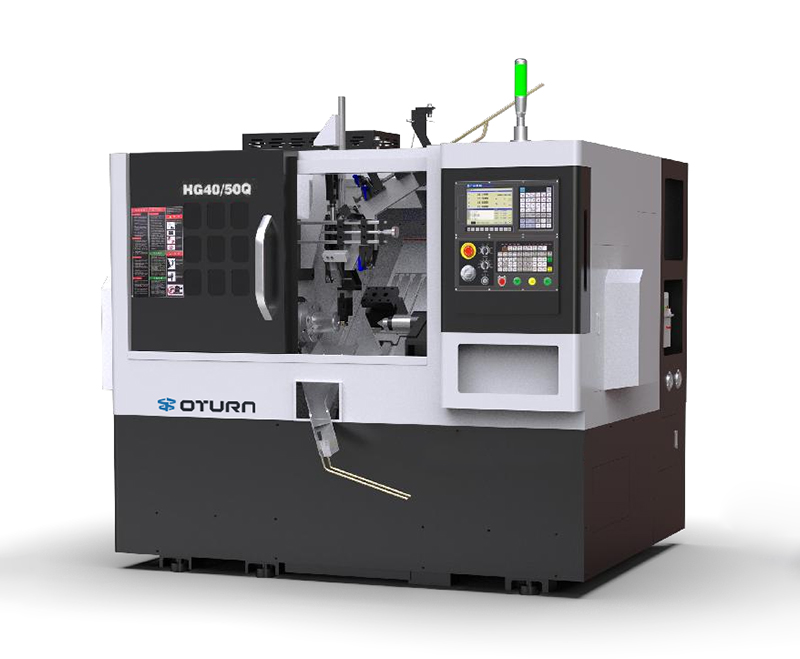As specialized processing equipment in the valve manufacturing industry, valve specific machines are responsible for machining complex and precise core valve components. With the continuous advancement of automation, high-performance valve specific machines have not only improved processing efficiency but also raised safety standards. This article will provide a detailed introduction to the operating procedures for valve specific machines to help practitioners better understand and implement them, thereby ensuring both production safety and product quality.
I. What is a Valve Specific Machine?
A valve specific machine is a machine tool specifically designed for valve component processing. It offers comprehensive multifunctional machining capabilities, such as external turning, end facing, taper processing, weld beveling, and arc processing, enabling the high-precision machining of core valve components. For example, the HG40/50Q model features a 45-degree slanted bed design, offering strong structural rigidity and fast tool changeover, making it suitable for high-volume precision production. It is also automation-compatible and can be integrated with robots and feeder systems to achieve unmanned production line integration.
II. Safety Operating Procedures for Valve Specific Machines
Safe operation of valve specific machines is crucial to worker safety and stable equipment operation. Based on authoritative industry information and manufacturer guidance, the following key operating procedures are summarized:
1. Pre-Startup Inspection and Cleaning
Before starting the machine, the work surface must be cleaned and any remaining tools, workpieces, and debris removed to prevent accidental injury after the machine is started. All handles, switches, and control knobs must always be in the correct position, with unused parts left in the neutral position.
2. Clothing and Protective Equipment
Operators must wear work clothes and a work hat. Female operators must properly tuck their hair inside their hats to prevent it from getting caught in the machine and causing danger.
3. Secure Workpiece and Tool Clamping
Workpieces, fixtures, and tools must be securely clamped. Loose workpieces can cause the machine to move or even slip, potentially breaking tools or damaging the equipment, and in serious cases, causing personal injury.
4. Correct Operating Posture
Operators must stand in a safe position, avoiding the danger of falling workpieces or flying chips.
5. Precautions for Loading and Unloading Large Workpieces
When using a lifting device to load and unload large workpieces, do not stand under the workpiece during the loading and unloading process. Place the workpiece securely after unloading to prevent it from falling.
6. Maintain Focus at All Times
During operation, loading and unloading workpieces, adjusting tools, performing measurements and inspections, and cleaning chips are prohibited. Operators must remain at their posts to ensure prompt response to any abnormalities.
7. Post-Stop Operation Guidelines
After work is completed, the power system should be turned off and proper cleaning, lubrication, and maintenance should be performed to extend the life of the equipment.
III. Technical Features of Special Machines Enhance Safety and Efficiency
The structure and technical design of the valve special machine fully embody the combination of safety and efficiency. Taking the HG40/50Q special machine for valve as an example:
· The 45-degree inclined bed design enhances bed rigidity and stability, maintaining stable operation even under heavy cutting conditions and reducing the impact of vibration on safety and machining accuracy.
· The three-way turret design enables faster tool changes, reduces operator time and the possibility of operational errors, and improves overall production safety.
· High-precision positioning systems reduce the frequency of operational adjustments and mitigate the risk of secondary operations caused by positioning errors.
· Fully enclosed protective covers help prevent flying chips from injuring personnel, while also reducing dust and noise in the work environment, demonstrating human-machine safety considerations.
IV. Automation Compatibility Brings New Safety Guarantees
Modern valve processing equipment supports seamless integration with automated systems, such as robotic gripping, automatic feeding, and inspection, creating conditions that reduce direct contact risks for personnel. Automated production lines enable continuous batch processing of valve parts, reducing safety hazards and operational errors caused by manual intervention.
V. How to Ensure Safe Operation of Valve Machining Equipment?
· Strengthen operator training, regularly provide education on safety procedures and equipment maintenance knowledge, and enhance personnel safety awareness and skills.
· Introduce a safety inspection process, strictly performing equipment inspections and environmental cleanup before starting the machine.
· Use qualified protective equipment, such as goggles, protective gloves, and work clothes, to prevent mechanical injuries.
· Establish emergency response plans to ensure rapid power shutoff in the event of an abnormality to protect personnel. Regular maintenance and lubrication keep equipment in optimal condition and prevent accidents caused by equipment failure.
VI. Summary
Valve machines are critical equipment in the valve manufacturing industry. Safe operating procedures not only ensure the safety of operators but also underpin efficient and stable operation. Following scientific operating procedures, combined with advanced technical features and automation advantages, can effectively prevent production accidents and improve processing quality.
Every valve CNC machine operator should carefully observe these operating procedures and strictly adhere to safety regulations, contributing to safe production and technological advancement in the valve industry.
Post time: Oct-28-2025








